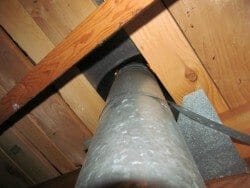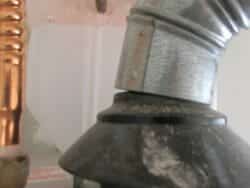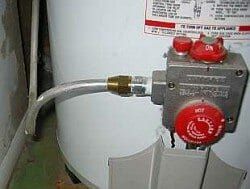Water Heater Vent Clearances & Requirements
Home » Plumbing » Water Heaters »
What Are Water Heater Vent Clearances?
Vent clearances refer to the minimum distances that must be maintained around the venting system of a water heater from combustible and non-combustible materials. These clearances are designed to prevent fire hazards, facilitate proper ventilation, and ensure the efficient operation of the water heater. The specifics can vary based on the type of water heater, whether it is gas-powered, electric, or a tankless model, and the venting system used (direct vent, power vent, or atmospheric vent).
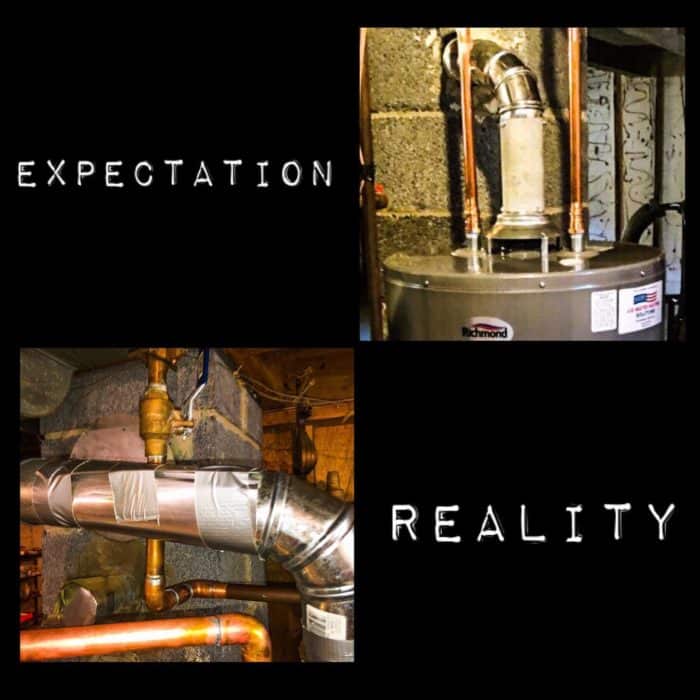
Why Are Vent Clearances Important?
- Fire Safety: Proper vent clearances help prevent the risk of fire by ensuring that hot exhaust gases can safely exit the home without coming into contact with combustible materials.
- Health and Safety: Adequate ventilation prevents the buildup of toxic gasses, such as carbon monoxide, inside the living spaces, safeguarding the health of the occupants.
- Efficiency and Performance: Correct venting and clearance ensure that the water heater operates efficiently, which can extend the life of the appliance and reduce energy costs.
General Guidelines for Water Heater Vent Clearances
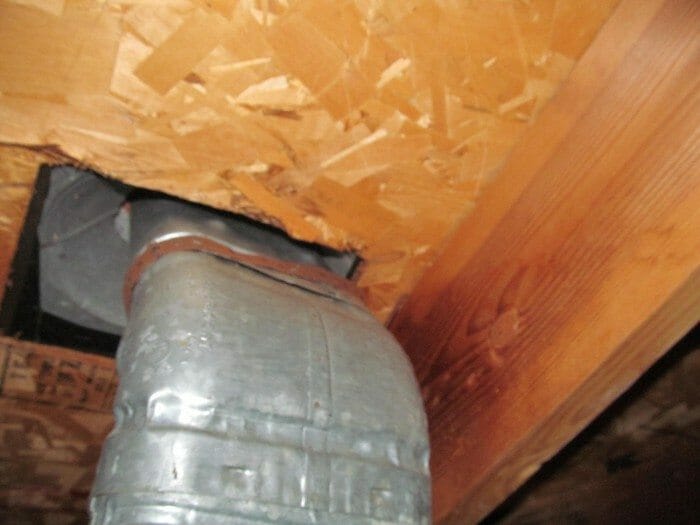
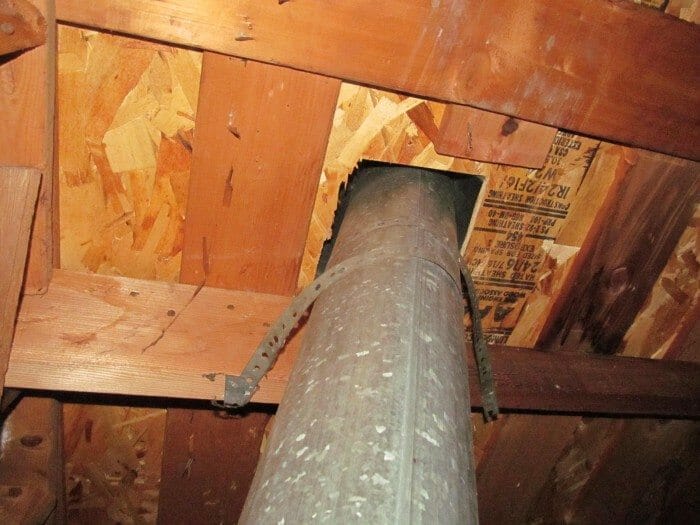
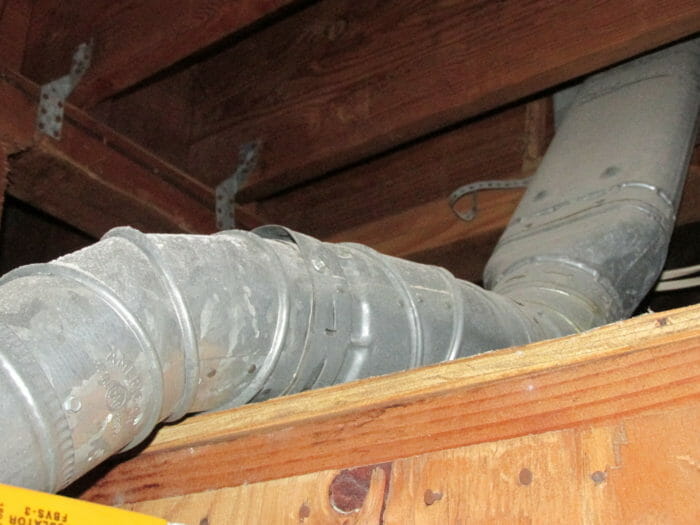
While specific requirements can vary, here are some general guidelines that are commonly followed:
- Combustible Materials: For gas water heaters with metal vent pipes, a common rule is maintaining at least a 6-inch clearance from combustible materials. This includes wood, paper, and certain types of insulation.
- Non-combustible Materials: Although metal vent pipes can be closer to non-combustible materials, it’s prudent to maintain some clearance to allow for proper heat dissipation and to facilitate inspections and maintenance.
- Clearance Above the Water Heater: It’s essential to ensure there’s adequate clearance above the water heater to allow for venting connections and servicing. Typically, a minimum of 12 to 18 inches is recommended.
- Vent Pipe Insulation: In certain situations, insulation is required for vent pipes to maintain exhaust gas temperatures and prevent condensation. The type of insulation and clearance requirements can vary based on local codes and manufacturer’s instructions.
An example of what NOT to do:
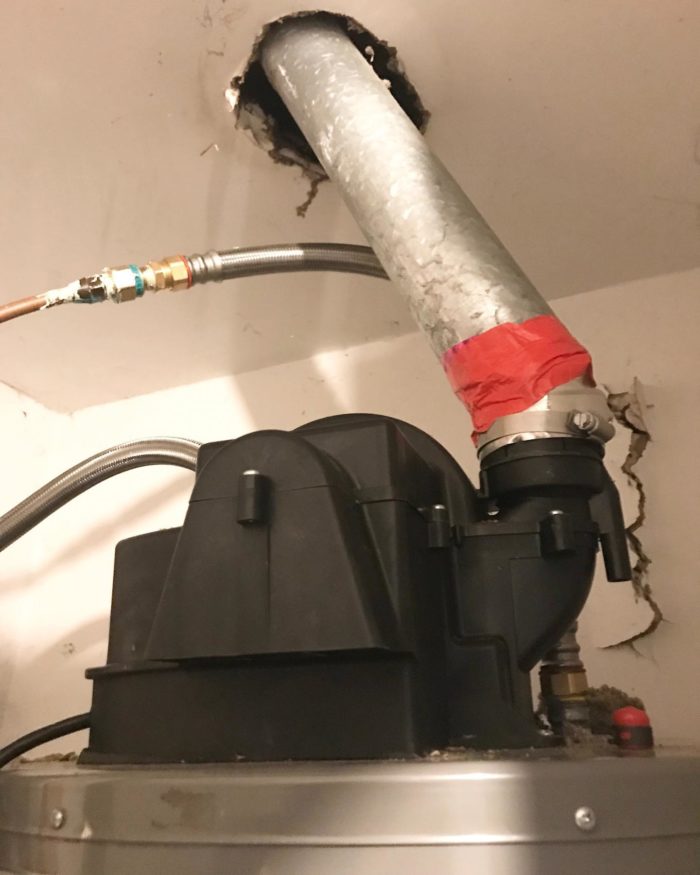
Venting Differences Between Electric, Gas and Tankless Water Heaters
The venting requirements for electric and gas water heaters differ significantly due to their operational mechanisms and safety considerations.
Electric Water Heaters
Electric water heaters do not require traditional venting systems like their gas counterparts because they do not produce combustion gasses. Instead, electric water heaters use electrical elements to heat the water, eliminating the need for exhaust vents. However, there are still a few considerations regarding placement and space requirements:
- Clearance: Adequate clearance around the electric water heater is necessary for safety, maintenance, and airflow. While these units do not vent combustion gases, ensuring they have enough space is crucial for preventing overheating and allowing for easy access during repairs or inspections. The specific clearance requirements can vary by manufacturer, but a general rule is to maintain a few inches of space on all sides and at least 12-18 inches of clearance on top.
- Ventilation: In tightly sealed or small spaces, ventilation may be necessary to dissipate the heat generated by the water heater and to prevent moisture buildup. This is particularly important in closet installations or confined spaces.
Gas Water Heaters
Gas water heaters combust natural gas or propane to heat the water, producing exhaust gasses, including carbon monoxide, that must be vented outside to ensure the safety of the home’s occupants. The venting system’s design is crucial to prevent the backdrafting of combustion gasses into the living space. Here are the primary venting types and guidelines for gas water heaters:
- Atmospheric Venting: The most common type, atmospheric vent water heaters, rely on the natural buoyancy of hot gasses to rise through a vertical vent pipe or chimney. These systems require a certain vertical rise, typically with a minimum of 12 inches before any horizontal run, and must terminate above the roofline following local codes for clearance from windows, doors, and other structures.
- Direct Venting: Direct vent water heaters pull in air from outside for combustion and vent exhaust gasses directly outdoors through a dual-chamber vent pipe. This system does not rely on indoor air for combustion, making it suitable for tightly sealed or space-limited installations. Direct vent systems must be carefully installed to ensure both intake and exhaust pipes maintain proper clearances from windows, doors, and other air intakes.
- Power Venting: Power vent water heaters use an electric fan or blower to force exhaust gasses through the vent pipe, allowing for more flexible installation options since the vent pipes can run horizontally and terminate on a side wall. However, power vent systems require electrical power to operate the fan, and the venting pipes must maintain specific clearances from windows, doors, and other vents to prevent exhaust gas re-entry.
Tankless Water Heaters
Tankless water heaters, also known as on-demand water heaters, have specific venting requirements that are crucial for their safe and efficient operation. These requirements vary depending on the fuel type (gas or electric) and the venting system design. Since electric tankless water heaters do not combust fuel, they do not require venting for exhaust gases but may have space and electrical installation considerations.
Gas tankless water heaters combust natural gas or propane to instantly heat water as it flows through the unit, necessitating a venting system to safely expel the combustion products, including carbon monoxide, outside the dwelling. The venting requirements for these units include:
- Type of Venting Material: Gas tankless water heaters often require special stainless steel vent pipes that can withstand high temperatures and the corrosive nature of the exhaust gasses. The manufacturer’s installation guide will specify the type of venting material required.
- Venting Configuration: There are two main venting configurations for gas tankless water heaters:
- Direct Vent Systems draw combustion air from outside and vent the exhaust gasses outside through a sealed vent system. This configuration is ideal for tightly sealed homes as it does not consume indoor air for combustion.
- Power Vent Systems expel exhaust gasses to the outside using an electric fan or blower, allowing for more flexible installation locations since the vent can be routed horizontally or vertically as needed. Power vent units use indoor air for combustion.
- Clearances: Vent pipes must maintain specific clearances from windows, doors, air intakes, and other structures to prevent exhaust gas re-entry into the building and to ensure safety. These clearances vary based on local building codes and the manufacturer’s specifications.
- Length and Elbow Restrictions: The total length of the vent pipe and the number of elbows or bends can affect the efficiency of the venting and the performance of the tankless water heater. Manufacturers provide guidelines on maximum vent length and the allowable number of bends to ensure proper exhaust flow.
- Condensation Management: High-efficiency condensing tankless water heaters produce condensate that must be properly managed. These systems typically require a condensate drain and specific installation practices to handle the acidic water produced during the combustion process.
Electric Tankless Water Heaters
Electric tankless water heaters do not produce combustion gasses and, therefore, do not require venting systems. However, they do have specific electrical requirements, including adequate amperage, voltage, and circuit breaker specifications, to safely and efficiently operate. Additionally, proper installation ensures there is sufficient space around the unit for access, maintenance, and heat dissipation.
PVC Vent Pipe Is Unsafe
Using PVC (Polyvinyl Chloride) pipe as a vent pipe for a gas water heater is not recommended and can pose significant safety hazards. Here’s why it’s a bad idea:
Heat Tolerance and Melting Risk
PVC pipes are made from thermoplastic material that has a relatively low heat tolerance compared to materials like metal that are typically used for venting combustible gases. The high temperatures of the gases exiting a gas water heater can cause the PVC pipe to soften, warp, or even melt, leading to a risk of structural failure. This can create dangerous situations where hot gases and potentially flames could escape into living spaces.
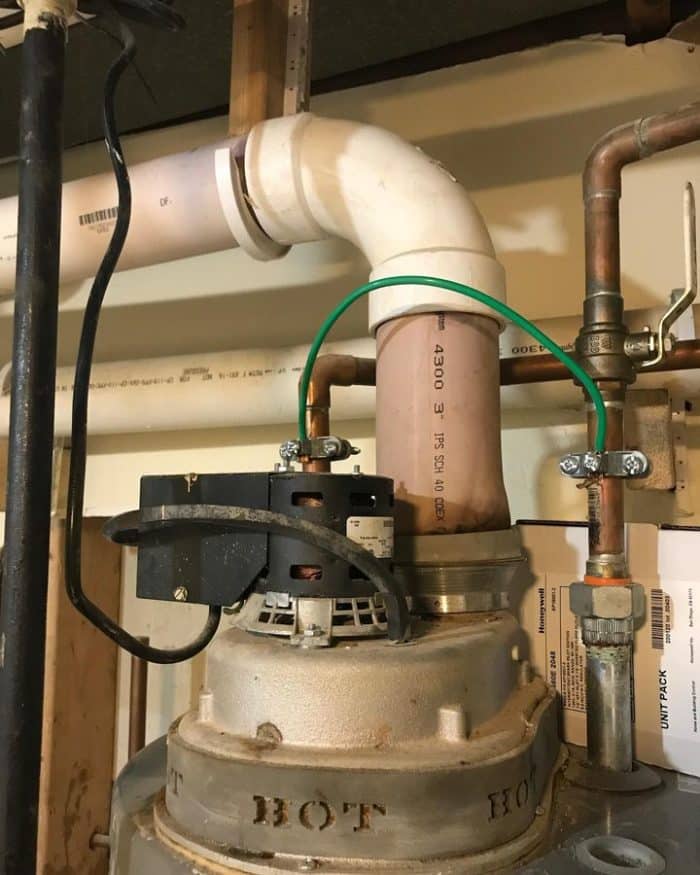
Chemical Degradation
The combustion gases produced by gas water heaters can contain various acidic compounds. PVC, while resistant to many chemicals, can be degraded by acidic compounds over time, leading to the deterioration of the pipe’s integrity. This degradation can result in leaks, which could allow harmful combustion gases, including carbon monoxide, to enter indoor spaces, posing serious health risks.
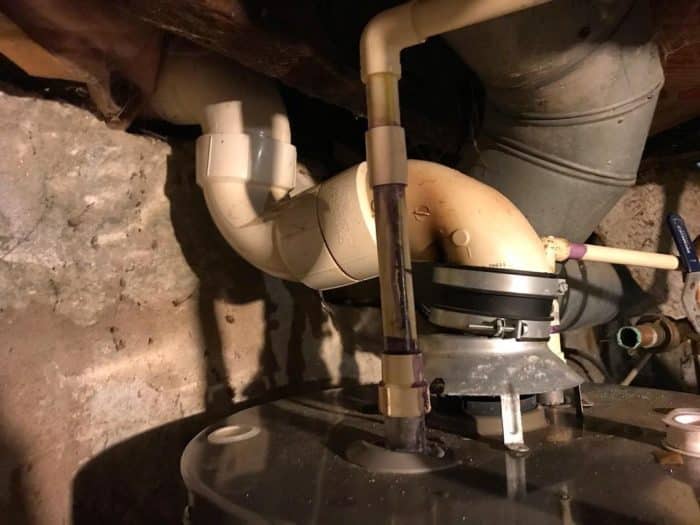
Fire Hazard
PVC is combustible; when exposed to high temperatures or flames, it can catch fire. Using PVC as a vent pipe for a gas water heater presents a fire risk, especially if the pipe were to melt or become damaged and allow flames or excessively hot gases to come into contact with it or nearby combustible materials.
Code Violations
Most building codes and standards strictly regulate the materials and methods used for venting gas appliances. Using PVC pipes for this purpose is likely to violate local building codes and manufacturer’s installation instructions. Non-compliance not only poses safety risks but can also affect insurance coverage, lead to fines, and create issues when selling the property.
Carbon Monoxide Poisoning Risk
Proper venting is critical for carrying combustion by-products, including carbon monoxide (CO), out of the home. CO is a colorless, odorless gas that can cause illness or death with sufficient exposure. Any compromise in the venting system, such as leaks or blockages from melted or deformed PVC, can lead to dangerous levels of CO in the home.
Adhering to Local Codes and Manufacturer’s Instructions
It’s imperative to consult and adhere to local building codes and the manufacturer’s installation instructions when determining vent clearances for water heaters. Local codes can vary significantly, and manufacturers often have specific requirements that must be followed to ensure the warranty remains valid and the unit operates safely. If any doubt arises that there could be a venting issue, consult a qualified professional immediately.
